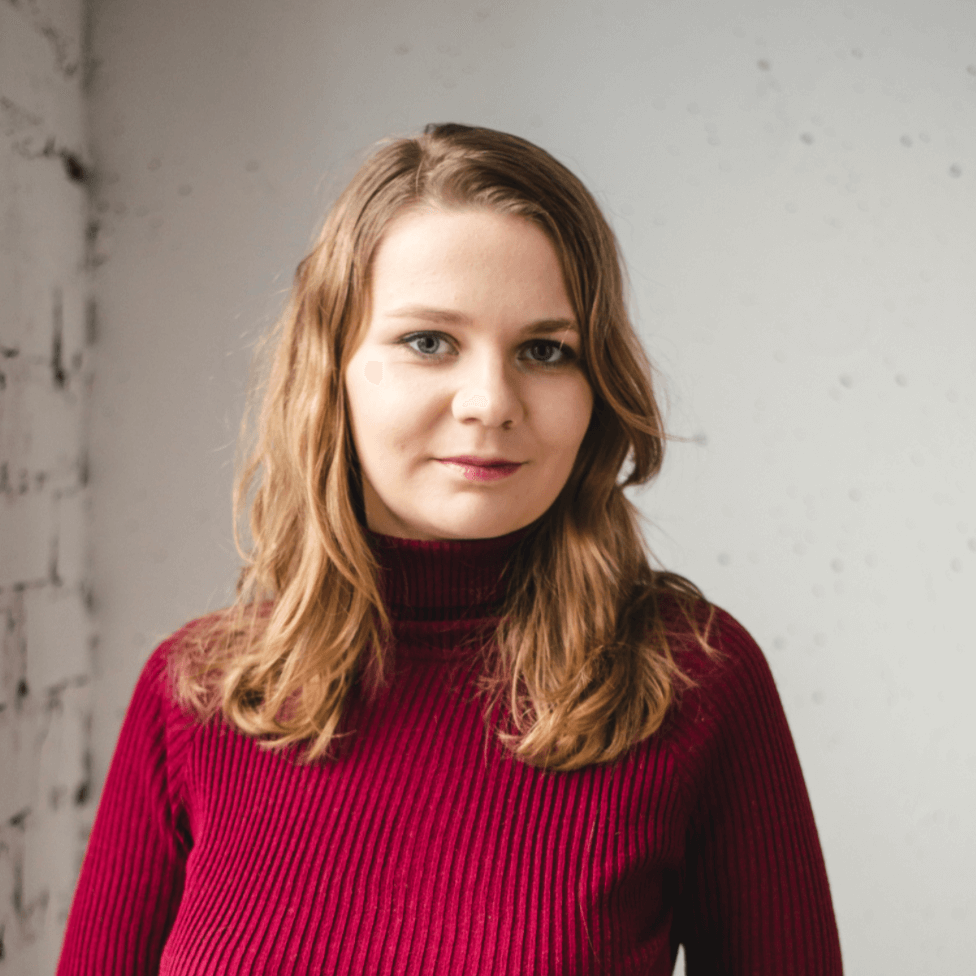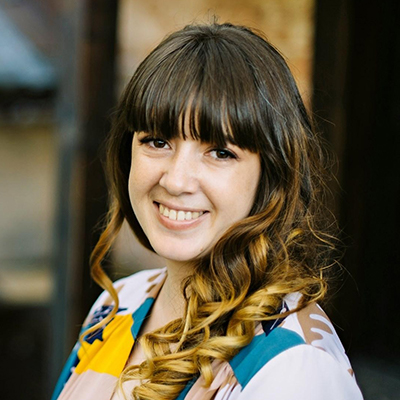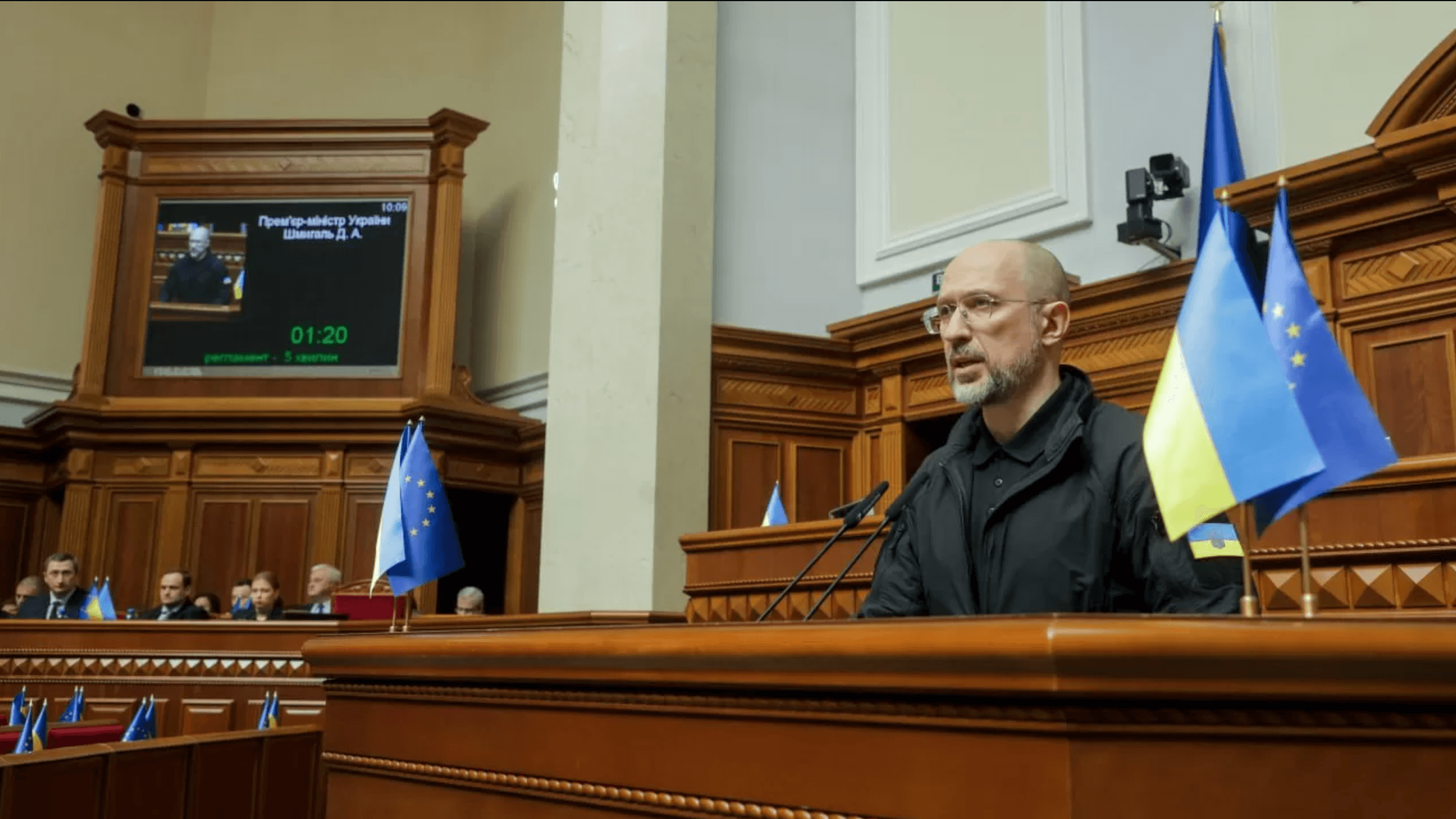Medical reform has given local communities (hromadas) more autonomy in developing their health care system. Today, local authorities decide how to develop medical facilities and their services. Even though the National Health Service of Ukraine (NHSU) can cover a certain percentage of medical expenditures under a state guarantees program (mainly to pay wages), maintaining a large number of health care facilities places a burden on small, low-budget hromadas. They have to choose between underfunding and abandoning medical institutions that lost out in the competition for patients.
We have analyzed the health care network of the Ostroh hromada to offer recommendations on how to develop it. The methodology and approaches used in this study are recommended for other hromadas facing similar problems.
Context: the UK experience and Ukraine’s health care reform
The path Ukraine is treading to build a high-quality and robust health care system is not unique. The UK walked the same path, whose healthcare system is quite similar to Ukraine’s. The country also has the National Health Service (NHS) that concludes contracts with health care institutions for the provision of services and finances them at established tariff rates. Considerable emphasis is placed on primary care. Such services are provided by family physicians that mainly work in medical institutions. Community and district nurses provide comprehensive care and support in people’s homes because hospital visits increase the risk of infection with persistent nosocomial strains of viral and bacterial infections. Patients are sent to narrow secondary and tertiary care specialists only if their problems cannot be resolved at primary care facilities. As of 2021, there are 1,229 public and private hospitals in the UK providing specialized secondary and tertiary care. As of the end of 2020, there were 1,186 hospitals of all levels in Ukraine. The UK has 2.5 hospital beds per 1,000 people (2019). In Ukraine, the number of hospital beds is 5.5 per 1,000 population (end of 2020).
Presently, UK health care is one of the most effective in the world. It ranks 18th out of 190 in the World’s Health Systems Ranking. Ukraine ranks 79th on this list. Public health care in the UK is nearly free for patients. Like in Ukraine, it is mainly paid for by general taxation. Every year, the country spends 9.4% of its GDP on health care. For comparison, Ukraine plans on spending 4.2% of its GDP on health care in 2022.
Developing primary health care and supporting the most robust secondary and tertiary care hospitals are among the key tasks of Ukraine’s medical reform. According to the World Health Organization (WHO), 80-90% of patients can be examined and treated in primary care settings. Primary health care is designed to provide people with comprehensive health care: from health promotion and disease prevention to treatment, rehabilitation, and palliative care, considering each person’s medical needs throughout their lifetime, not just treating specific diseases.
The publication was prepared as part of the Think Tank Development Initiative implemented in Ukraine by the International Renaissance Foundation in partnership with the Open Society Initiative for Europe (OSIFE), with financial support from the Embassy of Sweeden in Ukraine, based on the analytical report “Preparation of recommendations for the development of a network of medical institutions in the Ostroh city ATC: case method” by the analytical platform VoxUkraine.
As part of the project, we studied the supply and demand for community health services. We analyzed data about medical institutions’ location and the list of services provided under the medical guarantees program and spoke with key stakeholders. We identified the health care system’s features, strengths, and weaknesses, as well as opportunities and threats it is facing (SWOT-analysis) to develop recommendations for its improvement. This approach may be helpful for other hromadas working to improve their health care.
The views and opinions expressed herein are those of the authors. They do not necessarily reflect the views and opinions of the Embassy of Sweden in Ukraine, the International Renaissance Foundation, and the Open Society Initiative for Europe (OSIFE).
The health care system of the Ostroh hromada
The Ostroh hromada turned to us for help in analyzing its current health care system and ways to improve it. Its situation is unique. It has fully retained a vast primary care network in the villages comprising 33 paramedics-obstetric points and five outpatient clinics (and two more outpatient clinics — in Ostroh). In addition, the hromada has secondary and tertiary care facilities. However, due to lack of funding, the hromada is seeking to optimize the cost of maintaining its health care network while trying to keep the services available to patients.
The Ostroh City Amalgamated Territorial Community was established within its current boundaries in June 2020. It united the city of regional significance Ostroh with fifty-five villages on the border of the Rivne, Khmelnytskyi, and Ternopil oblasts. The hromada has a relatively small area of about 705 thousand sq km. In 2019, 43.5 thousand people inhabited the area. Local budget revenue for 2021 was planned at just over UAH 270.3 million. The biggest item of expenditure is education amounting to nearly UAH 200 million (74%). The local budget earmarked only UAH 2.7 million (1%) for health care, one of the smallest expenditure items. The hromada’s health facilities also receive funds from the NHSU. As of November 2021, the medical institutions had 17 signed service packages under the Medical Guarantees Program (13 of them are secondary care hospitals) and three packages of transitional funding. The planned amount of financing from the NHSU was UAH 90.7 million.
Figure 1. Map of health care institutions located within the Ostroh city hromada
Note: Ostroh with two outpatient clinics, a private primary care clinic, a multidisciplinary hospital, a psychiatric hospital, and an emergency department is in dark green, the localities with outpatient clinics (and, accordingly, family doctors) are in light green, the localities with UCCs (paramedics) are in yellow, and the localities without health care facilities are in red.
The hromada residents’ state of health
As in Ukraine in general, the main reasons for the death of residents of the Rivne oblast and Ostroh hromada in 2018-2020 were diseases of the circulatory system. Tumors are listed second among the causes of death, and injuries and poisoning third. In 2021, third place in the Rivne oblast and Ukraine was taken by deaths due to COVID-19.
The hromada’s worse incidence rates than the Rivne oblast in 2018-2020 were observed for diseases of the eye, appendages, diseases of the genitourinary and circulatory systems, and the incidence of tuberculosis.
Therefore, the prevention and treatment of cardiovascular diseases, neoplasms, COVID-19, diseases of the eye, skin, genitourinary and musculoskeletal systems require additional attention from the Ostroh hromada. A prevention program for the proper handling of toxic substances and hazardous objects could also help reduce deaths from external causes. These issues should be addressed by medical institutions located within the Ostroh hromada.
Health care institutions within the Ostroh hromada
Primary care is represented by the municipal primary health care center comprising seven outpatient clinics: two in Ostroh and five in other localities, 33 urgent care centers, and a private clinic. As of November 2021, they employed 20 family doctors, seven pediatricians, and 42 paramedics. The doctors working in the hromada concluded 34,000 declarations. Given the total number of residents registered in the hromada, we can conclude that more than 9,000 people have signed declarations with doctors in other hromadas or have not yet chosen their doctor. If the number of signed declarations increased to the normative value, it would bring in an additional UAH 3 million per year, considering the current NHSU tariffs.
Due to the vast primary health care points network, there is the question of lack of funding at primary care level. They proved effective during the pandemic when outpatient clinics and secondary care hospitals were overloaded with COVID-19 patients, and under travel restrictions. In “quiet times,” they provide access to health care services for less mobile populations, easing some of the burdens on family doctors. Still, they require considerable funding, which burdens family doctors who receive money from the declarations they conclude with their patients.
“A very good girl provides services to us at the primary health care point in the village. She is careful when you need to do an injection. I often get sick, and I often interact with her. She always comes. Never refuses. I’m very pleased with her,” says a hromada resident.
According to our calculations, if primary care in the Ostroh hromada stood to receive UAH 20.4 million from the NHSU (as of November 2021) and employed about 60 doctors and paramedics and a similar number of nurses, then an average of UAH 10,000 is left to pay wages monthly per person, after tax deductions. If we include ancillary staff (junior medical staff, the finance department, etc.), the wages will be even lower (secondary care pays wages of similar size). In this calculation, we do not consider the cost of maintaining the premises, utility bills, and equipment purchases. Therefore, it can be concluded that the current number of declarations is not enough to finance the vast primary health care points network.
“We wouldn’t want to lose the maternity hospital, a very nice building. We’re looking into options to preserve it so that it can maintain itself and we can develop this type of medical service. We’re looking for a way to do it with minimal losses for the hromada,” says a local authority representative. The municipal non-profit enterprise “Ostroh Multidisciplinary Hospital” represents secondary care, which includes a separate maternity hospital and a dental clinic. As of November 2021, the hospital had 13 service packages signed with the NHSU under the Medical Guarantees Program (Table 1). The maternity hospital is located three kilometers away from the multidisciplinary hospital. According to the NHSU, the hospital only delivers 150 births a year, while it needs at least 600 births per year to fund its maintenance. Because the respondents interviewed want to retain the maternity ward in the hromada, local authorities and the medical community seek ways to preserve and develop it.
Ostroh Regional Psychiatric Hospital is the only tertiary care institution in the hromada, funded and managed at the oblast level. However, the oblast authorities are prone to shifting part of the costs to the hromada.
The hospital is also facing acute funding problems. Despite the constant reduction of departments, beds, and staff, there is not enough money even to pay salaries. The reason is that the NHSU covers only the medical component of psychiatric care (i.e. medical treatment — medical services such as medicines and medical manipulations). The social component (medical care) is still not funded.
Although the National Health Service finances the provision of health care services, these funds are often only enough to pay salaries to medical staff. The burden of other costs — heating, repairs, and equipment upgrades — falls on the local budget. However, as mentioned above, only UAH 2.7 million is earmarked in the local healthcare sector budget, which is 34 times less than the NHSU’s funding. According to the Ostroh ATC’s health care representatives, there is primarily a lack of financing to purchase new, modern equipment. Besides, there was not always enough money to pay bonuses to employees. The only way to encourage new employees was to offer the doctors from the multidisciplinary hospital lodging in a dormitory in the hromada.
“For us to achieve our goals, for example, diagnose cancer or other diseases, we need normal, good equipment. In terms of our current equipment, a hospital like ours has no prospects at all, if nothing changes… Very costly equipment, only a CT scanner costs 12 million hryvnias,” said a local government official.
Table 1. List of NHSU packages contracted by the hromada’s health facilities and their expected funding, November 2021
| Medical institution | Service group | Contract amount, UAH, as of 11.2021 |
| Municipal non-profit enterprise “Ostroh Multidisciplinary Hospital” of the Ostroh City Council of Rivne District of the Rivne Oblast, USREOU: 01999833
|
1. Surgeries for adults and children in a hospital setting | 4,298,005.17 |
| 2. Inpatient care for adults and children without surgery | 16,608,639.39 | |
| 3. Pregnancy care in an outpatient setting | 588,960.00 | |
| 4. Medical care during childbirth | 892,852.00 | |
| 5. Medical care for adults and children in an outpatient setting (prevention, observation, diagnosis, treatment, medical rehabilitation) | 3,263,671.32 | |
| 6. Hysteroscopy | – | |
| 7. Esophagogastroduodenoscopy | 9,648.00 | |
| 8. Colonoscopy | – | |
| 9. Cystoscopy | 24,108.00 | |
| 10. Diagnosis, treatment, and care for persons with HIV | 54,648.00 | |
| 11. Inpatient palliative care for adults and children | 551 418.00 | |
| 12. Mobile palliative care for adults and children | 759 564.00 | |
| 13. Inpatient care for patients with acute respiratory disease COVID-19 caused by coronavirus SARS-CoV-2 | 3,292,980.28 | |
| Transitional financial support for the comprehensive provision of medical services by health care institutions, under terms applying as of September 1, 2020 | 5,679,582.51 | |
| Municipal non-profit enterprise “Ostroh Primary Care Center” of the Ostroh City Council of Rivne District of the Rivne Oblast, USREOU: 38543370 | 1. Primary care | 14,877,983.00 |
| 2. Vaccination against acute respiratory disease COVID-19 caused by coronavirus SARS-CoV-2 | 5,610,000.00 | |
| VAGASCOM Limited Liability Company, USREOU: 42835590 | 1. Primary care | 1,589,714.00 |
| 2. Vaccination against acute respiratory disease COVID-19 caused by coronavirus SARS-CoV-2 | 40,077.00 | |
| Ostroh Regional Psychiatric Hospital of the Rivne Oblast Council, USREOU: 02010422 ** | Transitional financial support for the provision of comprehensive medical services by health care institutions | 6,214,849.66 |
| Transitional financial support for the provision of comprehensive medical services by health care institutions, as of September 1, 2020 | 7,566,757.57 | |
| 1. Inpatient psychiatric care | 18,811,407.69 | |
| Total | 90,734,865.59 |
The hromada’s peculiar feature is its proximity to Rivne, an oblast center with a developed health care infrastructure. Therefore, it is important to understand which health care services should be provided within the hromada and which would be more appropriate to receive in Rivne, developing quality transport links to the oblast center instead of duplicating health care facilities in the hromada.
“It‘s probably better in Rivne. Probably because they somehow provide services faster. Overall, it’s hard to tell why. Here [in Ostroh], several doctors receive you, which makes them something like “celestial beings”. Maybe there’s been little competition among doctors. They’ve been working for a long time, and they know that no one will steal their job. Those with better knowledge and go-getters find themselves a better job than here in Ostroh,” said a hromada resident.
How to improve the Ostroh hromada’s health care system?
We offer some recommendations to resolve the issues outlined above. They may also help other small hromadas balance the cost and quality of health care at the local level.
Primary care
Expanding the list of primary care services. In addition to the primary care packages signed with the NHSU, it is advisable to consider signing the packages “Support and treatment of adults and children with tuberculosis in primary care settings” and “Diagnosis, treatment, and support of HIV (and suspected HIV) patients” (also available in primary care). Given the aging trend, it may be appropriate for the hromada to have a doctor specializing in gerontology.
Establishing an emergency care service and optimizing the UCC network. Creating an emergency care service to provide round-the-clock counseling to patients (by phone, messenger, and website) and having a doctor/paramedic to visit patients at home could effectively protect family physicians from constant phone calls from patients. It could also reduce the need for primary care points in villages and relieve emergency care from inappropriate calls. This will reduce the number of premises occupied by primary care points (and their maintenance costs). Instead, primary care points should be retained in the largest villages and equipped with vehicles to visit (patronize) patients in adjacent localities.
Encouraging the residents of Ostroh, other hromadas, and Ostroh Academy students to sign declarations. To increase family doctors’ incomes, Ostroh Academy students should be encouraged to sign declarations with family doctors in the hromada. Also, the quality of service provided by local family doctors should be increased to make them more attractive to patients from other hromadas. For instance, this can be done by ensuring round-the-clock online patient support (this may be a function of the Ostroh hromada emergency care service for the patients who have signed declarations with the hromada’s doctors, as mentioned above). It is also advisable to create a primary care website for Ostroh hromada, significantly facilitating patients’ access to information about doctors and interactions with them.
Secondary care
Complying with the requirements of the NHSU packages. In 2022, the NHSU will introduce requirements for the number of cases for receiving the packages “Medical care during childbirth” (at least 150 births in the prior year), “Medical care for acute stroke in a hospital setting” (at least 100 cases in the prior year), and “Medical care for acute myocardial infarction” (at least 50 cases in the prior year). The number of requirements will continue to increase. Therefore, the hromada needs to monitor which services should be implemented and which will not be financed in the future due to limited hospital capacity.
Although maintaining the maternity hospital is unprofitable for the Ostroh ATC, the hromada may consider retaining it. To reduce the outflow of mothers-to-be, it is advisable to survey them to find out what criteria they use to choose a maternity hospital and then try to fulfill their wishes (thus reducing the outflow of mothers-to-be to other maternity wards). The hromada may also consider offering additional (paid) services at the maternity hospital: consultations of doulas, breastfeeding specialists, psychological support, and training programs for young parents. The maternity hospital can also implement early pregnancy prevention programs. It can try to raise grant funds for this.
Ostroh Multidisciplinary Hospital offers four out of six packages of priority services in an outpatient setting, including diagnostics and treatment procedures to ensure early detection of tumors. We suggest that it consider the possibility of signing contracts for the service packages “Bronchoscopy” and “Mammography.” For patients to apply for preventive care examinations to a secondary care hospital, health care institutions should have quality interactions with family doctors. Such interactions can be achieved by establishing a coordination council at the City Council of the Ostroh hromada. Another reason preventing the hromada residents from having timely preventive care examinations may be poor transport links between localities. Launching a “mobile hospital” project may resolve this problem: an adequately equipped car will come to different localities to run tests for their residents. Another way to offer the hromada residents necessary preventive care examinations and bring patients to the multidisciplinary hospital is to rent or buy a bus by the hospital (local government or benefactors) to take the residents to the multidisciplinary hospital and back once a month. In one month, such a bus could provide preventive care examinations for 20-23 localities’ residents (according to the number of working days per month).
The Ostroh hromada, whose hospital has a surgical department, may also consider providing services according to the day case surgery package using relatively non-invasive techniques with short-term hospitalization of patients. This practice is becoming more widespread, as it has been noticed that patients recover after surgery better at home than in hospitals.
According to the respondents, when contracting with the NHSU, it would be helpful to consult with health care institutions of neighboring hromadas to appropriately distribute packages between them to avoid duplication (and the risks that no medical institution meets the requirement for the minimum number of patients or procedures). However, if the hromadas are unwilling to abandon their health guarantees packages in favor of other hospitals, this may not work.
Tertiary care
Developing additional paid services. Because of poor funding, Ostroh Regional Psychiatric Hospital has been forced to cut the number of beds and staff. The vacated premises can be used for palliative care (either alone or in collaboration with the multidisciplinary hospital) and paid services (nursing services, psychological assistance, a center for combating domestic violence, etc.).
Funding
Money from the National Health Service of Ukraine and the local budget is just enough to keep up the medical institutions’ current activity level. Additional funding is needed to develop and invest in equipment upgrades. The funding can be obtained by getting businesses involved in charity (in particular, the Dnipropetrovsk Oblast Children’s Clinical Hospital uses this method) and applying for grants. Currently, the World Bank has projects to finance repairs of dispensaries. There are separate grant programs for doctors. The Regional Development Fund will fund some projects. The hromada’s budget, the Ukrainian Social Investment Fund, and grant programs from embassies of different countries can also provide funds for medical needs. To find additional funding, it is advisable to have a separate staff member – a grant manager – in the city government who would interact with representatives of health care institutions to prepare grant applications.
Conclusion
To optimize health care costs and keep priority services available to the hromada it is necessary to analyze the demand for medical services among the local population and develop a health care strategy based on this data. We recommend that small hromadas focus on developing disease prevention and primary care, including nursing services, since most of the public’s overall demand for health care can be met at this level. This will improve the population’s health and reduce secondary and tertiary (more expensive) health care burdens. The residents’ health will also have an economic effect: preventing premature deaths and improving the quality of life and longevity will ensure the hromada’s economic growth.
Attention
The authors do not work for, consult to, own shares in or receive funding from any company or organization that would benefit from this article, and have no relevant affiliations





